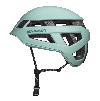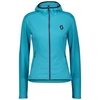New route on K7 for Larcher, Leoni, Cagol and Orlandi
On 10 August the Italian expedition Karakorum 2009 comprised of Rolando Larcher, Fabio Leoni, Michele Cagol and Elio Orlandi completed their new route The Children of Hushe (1100m, 7b A2) up the West Pillar of K7 (Charakusa Valley, Pakistan). On 14/08/2009 Rolando Larcher and Fabio Leoni carried out a fast repeat of Nayser Brakk (5200m).
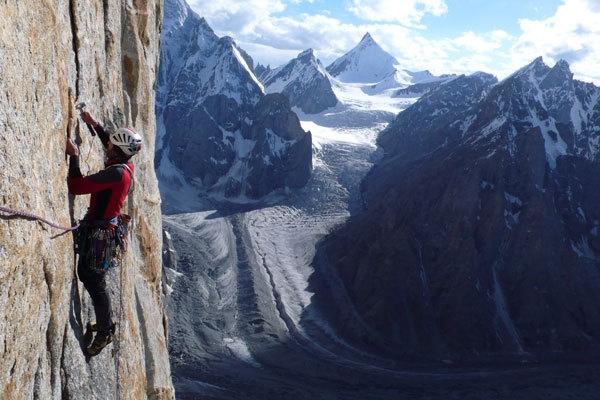
 1 / 30
1 / 30
Larcher on pitch 17 of The Children of Hushe. In the background the beautiful Drifika Peak.
 arch. Karakorum 2009
arch. Karakorum 2009
Here they go again, the four over-40 mountaineers also known at the "40 Ruggenti". This time the quartet travelled to Pakistan's Karakorum, more precisely to K7, a beautiful mountain located in the remote Charakusa Valley, where they established a new route up the W Pillar of K7. In recent years this mountain has constantly been in the news for cutting-edge mountaineering: not by chance the likes of top alpinists such as Steve House and Nico Favresse have left their mark on these walls. The Children of Hushe, dedicated to Riccardo Cassin, is 1500m long (1100m up rock + 470m of snow and ice) and was climbed over 8 days with difficulties up to 7b, A2. The route climbs the rock missile to reach the summit at 5700m and proved to be highly demanding.
For those who don't regularly follow alpine news reports, here is some information about the four climbers. Rolando Larcher, policeman and climber, has become intrinsically to some of the most beautiful mult-ipitch sport routes. Fabio Leoni, climber and much more, is one of the most active and famous climbers in the vertical eldorado of Valle del Sarca. Climbing in the Dolomites has become a religion for Michele Cagol while, last but by not least, Elio Orlandi is a mountaineer and artist who, in Patagonia and "his" Brenta Dolomites, has always been at the forefront. All four are over 40 years old, with Orlandi leading the field (noblesse obblige) by having moved on into the next league of ten. All four are from the Trentino region of Italy. Above all though, all four are convinced though that the beautiful aspect of these expeditions is the adventure they experience together, as a group. And to those who believe this is somewhat rhetorical, they reply with facts. Those which saw them join forces for the first time in 2007 in Patagonia to climb 'Osa ma non troppo', the new route on Cerro Cota 2000 (700m 7b A2+), a success which was replicated in 2008 in Patagonia with 'El Gordo, El Flaco y L’Abuelito' on the Central Tower of the Torres del Paine (1200m 7a+ A3+), to which they now add their Children of Hushe'. Three (great) routes in the space of just three years is a fantastic result, which makes it difficult to believe that these things have come about only by chance. Who knows, perhaps their group style really does count for something. For example, this time round they had made a pact: if one of them had felt the effects of altitude, they would all have turned back. This happened twice, and twice they descended. In fact, one of the main themes of this expedition was to experiment what it meant to make a first ascent of a big wall at altitude, in Pakistan's Karakorum. Another important aspect was the contact with the local inhabitants and above all with the children of Hushe, which has now resulted in Larcher, Leoni, Cagol and Orlandi all collaborating with this population. It is as if the friendship and need to share things in an brotherly manner extended from the group of four mountaineers to what was around them. This too may seem rhetorical, but it is a fact. A great fact of a type of mountaineering which at least attempts to break loose from it's "egoistical" desire of conquest.
FOR THE CHILDEREN OF HUSHE. Who would like to find out more and participate in projects for the Hushe children please write to peribambinidihushe@excite.it The first project is to aid the building of a new college at Skardu, which will enable the Hushe children to continue school even after 7th grade.
THE CHILDREN OF HUSHE by Rolando Larcher
After almost a month we returned to civilisation and an place where we could connect to the internt. The expedition proved a success, without and injuries
or nasty surprises. We managed to establish a new route up the West Pillar of K7, 1500m long, reaching an altitude of circa 5700. We climbed for 8 consecutive days, to which another 4 have to be added which were used to prepare the ascent. The difficulties were demanding, but the biggest question mark was the altitude, which also happened to be one of the main reasons why we embarked in this new adventure. Base Camp was positioned at 4200m and moving up with loads, acclimatising slowly, proved very demanding.
Altitude sickness is deceitful, it appears all of a sudden and this creates deep insecurity, much more than the unpredictable weather in Patagonia. On 31 July we set off, convinced, ready to stay on the wall for an extended period of time and after a demanding first day we established a bivvy at 5000m. After a sparing meal we settled down for the night, but a few hours later I started to have trouble breathing, I gasped for breath as if I had asthma. The result: I remained awake all night, sitting down, and the next morning we swiftly descended to base camp, where I quickly started to feel better.
After a day's rest we were ready to set off again, but the following night Michele Cagol felt poorly: he had the same symptoms as I did, plus his limbs had swollen up. We waited another day and then seeing that he felt better we set off, with a thousand uncertainties whizzing through our minds. But we climbed higher than before and established our camp and tents at 5200m At this point Elio Orlandi started to feel the effects of altitude, but thanks to medicine (in the form of Diamox, used for altitude sickness) he soon felt better and didn't have to descend, otherwise we would have risked running out of time. .
Despite all, and climbing determinedly, on 10 August we reached the top of the wall and crowned our dream, taking my, our good luck charm for the third consecutive time onto the summit: the Italian Police flag.
Once we descended we were well acclimatised, so Fabio Leoni and I made the best use of the final day to quickly climb the spectacular summit of Nayser Brakk 5200m: this is an incredible natural copy of the Egyptain Cheope pyramid, but a 1000m high. We reached the summit on 14 August, Pakistan's Independance day, and from the summit we listed to the echoes from base camp below, where the officers and cooks of the various expeditions had organised a party with all the national anthems of the countries present there: Pakistan, Italy, Switzerland, Germany, Australia and New Zealand.
The trip proved to be a great adventure, but not only from a mountaineering point of view but above all from a human side of things. The feeling, harmony and union of our team was something almost taken for granted, seem that it was tried and tested on previous expeditions.
The biggest surprise came from the local population, completely the opposite from what is described in western mass media. The people we met were kind, friendly and happy, despite their extreme poverty. We called our new route "The Children of Hushe", to honour the final village we came across after driving 7 hours off-road , 3 of which along a dirt track. Located at 3050m, this is where we departed from on foot to reach our base camp 3 days later.
It was in Hushe that we had the most emotional and beautiful experience of the entire expedition, fare more intense and stronger than reaching the summit. We had brought 250 notepads and a thousand coloured pens from home for the children. Hushed is a small village of perhaps 50 mud huts, but when the word got out that we were giving away these presents, we were joined by more than 500 children. We attempted to make up for having underestimated how much would be needed by raiding the small village store and distributed everything as fairly as possible.
We we so touched by this display of humanity that it was only natural that we dedicated our route to these marvellous children located amongst the highest mountains in the world. But things won't finish here, because we got in touch with the head master of their local school to aid their limited possibilities.
Rolando Larcher
“KARAKORUM 2009” TRENTINA EXPEDITION
patrocinata dalla Società Alpinisti Tridentini e dal Club Alpino Accademico Italiano
Rolando Larcher, 43, lives in Trento, police officer, accademic of the Italian Alpine Club, 28 years dedicated to cutting-edge mountaineering and sport climbing worldwide
Fabio Leoni, 44, lives in Pergine, owns a climbing shop, accademic of the Italian Alpine Club, Globetrotting mountaineer, with more than 20 expditions worldwide
Michele Cagol, 45, lives in Trento, owns a climbing shop, accademic of the Italian Alpine Club, expert climber in the Dolomites.
Elio Orlandi, 51,lives in San Lorenzo di Banale, Mountain Guide,great expert of mountaineering in Patagonia.
Technical sponsors: La Sportiva, Montura, Petzl and Salewa.
THE CHILDREN OF HUSHE
K7 West Pillar
Characusa Valley (Karakorum Pakistan)
In memory of Riccardo Cassin
Length: 1100m rock + 470m snow and ice
Grade: 7b/A2
>> download the route topo
To help the children in Hushe please write to: peribambinidihushe@excite.it
For those who don't regularly follow alpine news reports, here is some information about the four climbers. Rolando Larcher, policeman and climber, has become intrinsically to some of the most beautiful mult-ipitch sport routes. Fabio Leoni, climber and much more, is one of the most active and famous climbers in the vertical eldorado of Valle del Sarca. Climbing in the Dolomites has become a religion for Michele Cagol while, last but by not least, Elio Orlandi is a mountaineer and artist who, in Patagonia and "his" Brenta Dolomites, has always been at the forefront. All four are over 40 years old, with Orlandi leading the field (noblesse obblige) by having moved on into the next league of ten. All four are from the Trentino region of Italy. Above all though, all four are convinced though that the beautiful aspect of these expeditions is the adventure they experience together, as a group. And to those who believe this is somewhat rhetorical, they reply with facts. Those which saw them join forces for the first time in 2007 in Patagonia to climb 'Osa ma non troppo', the new route on Cerro Cota 2000 (700m 7b A2+), a success which was replicated in 2008 in Patagonia with 'El Gordo, El Flaco y L’Abuelito' on the Central Tower of the Torres del Paine (1200m 7a+ A3+), to which they now add their Children of Hushe'. Three (great) routes in the space of just three years is a fantastic result, which makes it difficult to believe that these things have come about only by chance. Who knows, perhaps their group style really does count for something. For example, this time round they had made a pact: if one of them had felt the effects of altitude, they would all have turned back. This happened twice, and twice they descended. In fact, one of the main themes of this expedition was to experiment what it meant to make a first ascent of a big wall at altitude, in Pakistan's Karakorum. Another important aspect was the contact with the local inhabitants and above all with the children of Hushe, which has now resulted in Larcher, Leoni, Cagol and Orlandi all collaborating with this population. It is as if the friendship and need to share things in an brotherly manner extended from the group of four mountaineers to what was around them. This too may seem rhetorical, but it is a fact. A great fact of a type of mountaineering which at least attempts to break loose from it's "egoistical" desire of conquest.
FOR THE CHILDEREN OF HUSHE. Who would like to find out more and participate in projects for the Hushe children please write to peribambinidihushe@excite.it The first project is to aid the building of a new college at Skardu, which will enable the Hushe children to continue school even after 7th grade.
THE CHILDREN OF HUSHE by Rolando Larcher
After almost a month we returned to civilisation and an place where we could connect to the internt. The expedition proved a success, without and injuries
or nasty surprises. We managed to establish a new route up the West Pillar of K7, 1500m long, reaching an altitude of circa 5700. We climbed for 8 consecutive days, to which another 4 have to be added which were used to prepare the ascent. The difficulties were demanding, but the biggest question mark was the altitude, which also happened to be one of the main reasons why we embarked in this new adventure. Base Camp was positioned at 4200m and moving up with loads, acclimatising slowly, proved very demanding.
Altitude sickness is deceitful, it appears all of a sudden and this creates deep insecurity, much more than the unpredictable weather in Patagonia. On 31 July we set off, convinced, ready to stay on the wall for an extended period of time and after a demanding first day we established a bivvy at 5000m. After a sparing meal we settled down for the night, but a few hours later I started to have trouble breathing, I gasped for breath as if I had asthma. The result: I remained awake all night, sitting down, and the next morning we swiftly descended to base camp, where I quickly started to feel better.
After a day's rest we were ready to set off again, but the following night Michele Cagol felt poorly: he had the same symptoms as I did, plus his limbs had swollen up. We waited another day and then seeing that he felt better we set off, with a thousand uncertainties whizzing through our minds. But we climbed higher than before and established our camp and tents at 5200m At this point Elio Orlandi started to feel the effects of altitude, but thanks to medicine (in the form of Diamox, used for altitude sickness) he soon felt better and didn't have to descend, otherwise we would have risked running out of time. .
Despite all, and climbing determinedly, on 10 August we reached the top of the wall and crowned our dream, taking my, our good luck charm for the third consecutive time onto the summit: the Italian Police flag.
Once we descended we were well acclimatised, so Fabio Leoni and I made the best use of the final day to quickly climb the spectacular summit of Nayser Brakk 5200m: this is an incredible natural copy of the Egyptain Cheope pyramid, but a 1000m high. We reached the summit on 14 August, Pakistan's Independance day, and from the summit we listed to the echoes from base camp below, where the officers and cooks of the various expeditions had organised a party with all the national anthems of the countries present there: Pakistan, Italy, Switzerland, Germany, Australia and New Zealand.
The trip proved to be a great adventure, but not only from a mountaineering point of view but above all from a human side of things. The feeling, harmony and union of our team was something almost taken for granted, seem that it was tried and tested on previous expeditions.
The biggest surprise came from the local population, completely the opposite from what is described in western mass media. The people we met were kind, friendly and happy, despite their extreme poverty. We called our new route "The Children of Hushe", to honour the final village we came across after driving 7 hours off-road , 3 of which along a dirt track. Located at 3050m, this is where we departed from on foot to reach our base camp 3 days later.
It was in Hushe that we had the most emotional and beautiful experience of the entire expedition, fare more intense and stronger than reaching the summit. We had brought 250 notepads and a thousand coloured pens from home for the children. Hushed is a small village of perhaps 50 mud huts, but when the word got out that we were giving away these presents, we were joined by more than 500 children. We attempted to make up for having underestimated how much would be needed by raiding the small village store and distributed everything as fairly as possible.
We we so touched by this display of humanity that it was only natural that we dedicated our route to these marvellous children located amongst the highest mountains in the world. But things won't finish here, because we got in touch with the head master of their local school to aid their limited possibilities.
Rolando Larcher
“KARAKORUM 2009” TRENTINA EXPEDITION
patrocinata dalla Società Alpinisti Tridentini e dal Club Alpino Accademico Italiano
Rolando Larcher, 43, lives in Trento, police officer, accademic of the Italian Alpine Club, 28 years dedicated to cutting-edge mountaineering and sport climbing worldwide
Fabio Leoni, 44, lives in Pergine, owns a climbing shop, accademic of the Italian Alpine Club, Globetrotting mountaineer, with more than 20 expditions worldwide
Michele Cagol, 45, lives in Trento, owns a climbing shop, accademic of the Italian Alpine Club, expert climber in the Dolomites.
Elio Orlandi, 51,lives in San Lorenzo di Banale, Mountain Guide,great expert of mountaineering in Patagonia.
Technical sponsors: La Sportiva, Montura, Petzl and Salewa.
THE CHILDREN OF HUSHE
K7 West Pillar
Characusa Valley (Karakorum Pakistan)
In memory of Riccardo Cassin
Length: 1100m rock + 470m snow and ice
Grade: 7b/A2
>> download the route topo
To help the children in Hushe please write to: peribambinidihushe@excite.it
Note:
| Links Planetmountain | |
| Osa, ma non troppo | |
| El Gordo, El Flaco y L'Abuelito | |
| Expo Planetmountain | |
| Expo Salewa | |
| Expo La Sportiva | |
| Video | |
| Elio Orlandi | |
| Rolando Larcher | |
| Fabio Leoni | |
Latest news
Expo / News
Expo / Products
Climbing shoe designed for climbers looking for comfort.
Light climbing helmet with kevlar reinforcements.
Karpos Rock Evo Pants, Perfect pants for any summer outdoor activity.
La Sportiva Jackal II are trail running shoes dedicated to the world of ULTRA races and long distance training.
High quality suede gloves designed for via ferrata.
Lightweight Women's Hoody with stretch insulation, quick-dry for intense training.



 Copia link
Copia link





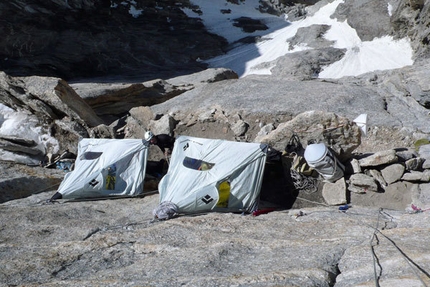





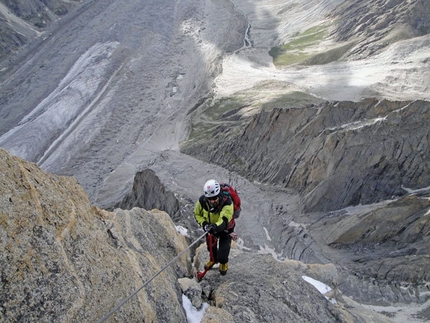




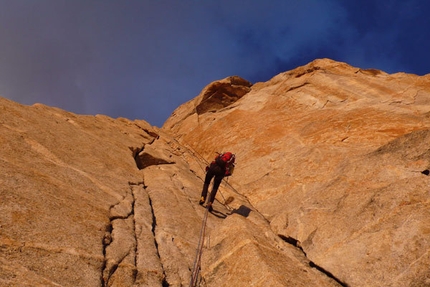
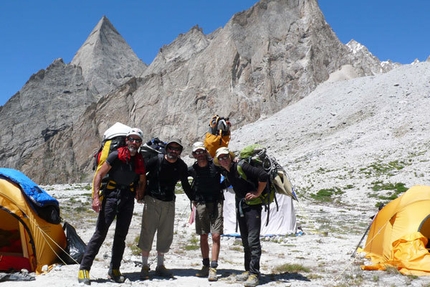
 See all photos
See all photos













